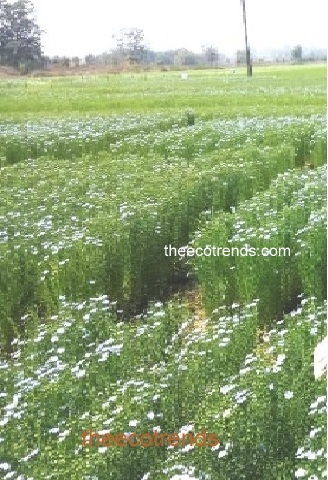According to the Global Agriculture Information Network of America the oil seed production of India during 2020-21 may increase up to considerable level.
This increase is expected to rise at the rate of two percent accounting up to 38.4 million tones.
This assumption is made on the basis of favourable season and increasing cultivable area. Rapseed, soybean, mustard, groundnut, and sun flower are principal oil seeds of India.
The USDA has tracked the trends of import during the last few years and has revealed a progress in import of edible oil from India in comparison to the previous year. It has an assumption that India will export about 2.5 million tons of edible oil in the market year of 2020-2021.
Jharkhand state has rain based agriculture. Main cultivable areas of the state have only up to 10 to 12 percent facility of irrigation. This is main reason behind the weakness of the crops.
The productivity of food grains, pulses and oilseeds in this state is less than the national average. The production and productivity of crops in comparison to other states is also very less in this state.
It is reported that this state has less production of paddy(by 49%),wheat(by 91%), and other food grains(by 47%) than agriculturally developed states. This percentage is 48 and 71 for pulses and oilseeds. The problems aggravate more during the year of drought.
In view of backwardness in agriculture of this state both the Central Government and the State Governments are running some projects to increase the production and productivity in this sector.
The production in oil seeds has risen after the organisation of Jharkhand as a new state. The cultivable area for oilseeds in 1999-2000 was only 59000ha which grew up to 157000 ha during 2006-07.
Some downfall in the oilseed sector was observed during 2009-10. During 2013 the cultivable area for oilseeds grew up to 260000 ha. The year 2014 observed rise and fall in terms of productivity. The average productivity in oilseeds during 2013-14 was 790kg per ha.
Contribution of Birsa Agricultural University in the Field of Oilseed Production
The contribution of BAU in the development of High Yielding Varieties in accordance with local Agro-Ecology has been recordable.
The variety of ground nut entitled Birsa Bold developed by the Department of Genetics and Plant Breeding of BAU Ranchi has brought recognition on the National Level. Other two varieties of ground nut namely Birsa-3 and Birsa-4 are very popular among farmers.
Birsa Soybean-1 and Birsa Soybean-2 are the Soybean varieties Developed by BAU- Ranchi and these too, are very popular among farmers.
Dr. Sohan Ram, the Scientist and Oilseed Specialist of the Birsa Agricultural University has developed a total of 7 High Yielding varieties of Sarguja, Mustard, and Linseed since 1994 to 2016. He is credited to develop Birsa Nijer-1(1994), Birsa Nijer-2(2003) and Birsa Nijer-3(2008) along with two varieties of mustard namely Shivani (2003) and Pooja-1(2009); and two varieties of Linseeds namely Divya (2015) and Priyam (2016). All these varieties have brought very good response from Jharkhand and Bihar.





I like what you guys are up too. This type of clever work and reporting!
Keep up the amazing works guys I’ve you guys to our blogroll.